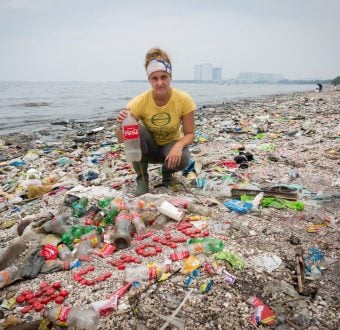As real chemical security standards languish, a Greenpeace
analysis of2006 lobbying records today identified 215 industry
lobbyists that spent an estimated $16.4 million – and possibly as
much as $74.5 million – to defeat strong chemical plant security
legislation. That is more than the $10 million the Department of
Homeland Security (DHS) spent on chemical security for the entire
fiscal year of 2007 or the $25 million requested for chemical
security by DHS for fiscal 2008.
The estimated range of $16.4 to $74.5 million available for
chemical security lobbying represents 11 to 50 percent of the total
reported lobbying expenditures of chemical industry and allied
groups in 2006. This lobbying campaign successfully killed
comprehensive chemical security legislation last year. The weak law
in its place doesn’t cover 3,000 water facilities using some of the
most dangerous airborne chemicals, and doesn’t give DHS the
authority to mandate safer technologies that could virtually
eliminate the threat.
“The resources devoted by these companies to undermining our
nation’s security and the safety of millions of people is
appalling,” said Rick Hind of Greenpeace. “Americans should be
outraged, especially with the growing number of terrorist attacks
in Iraq using chlorine gas and ominous new intelligence estimates
of terrorist’s ability to attack the U.S.”
Greenpeace investigators worked from internal documents, public
statements, testimony, news releases, industry lobby letters and
e-mails, Freedom of Information Act document requests and web site
postings by major chemical industry trade associations. They
identified lobbyists representing 13 trade associations that
included: the American Chemistry Council (ACC); American Petroleum
Institute (API); U.S. Chamber of Commerce (including CEO Thomas
Donahue) and Edison Electric Institute (EEI); their member
companies such as Dow Chemical, ExxonMobil and Halliburton; and 13
lobby firms such as Akin Gump and Holland & Knight.
Thousands of chemical plants across the country present an
almost incomprehensible vulnerability to terrorist attacks. In
2004, the Homeland Security Council estimated that an attack on a
single chlorine facility could kill 17,500 people, severely injure
an additional 10,000 and result in 100,000 hospitalizations and
70,000 evacuations. That same year, the U.S. Naval Research
Laboratory testified before the Washington, D.C. City Councilthat
100,000 people could be killed or injured in the first 30 minutes
of a catastrophic release of a tank car of chlorine or similar
chemical within blocks of Capitol Hill.
“Immediately following September 11, 2001, the Washington Post
reported that 9/11 ringleader Mohamed Atta visited a Tennessee
chemical plant asking lots of questions,” said Hind. “Safer
chemicals are already on the market that can be used instead.
That’s what the law should require – but it doesn’t. Now we know
why.”
For the report and supporting documents, go to: research.greenpeaceusa.org/?a=collections&c=16

